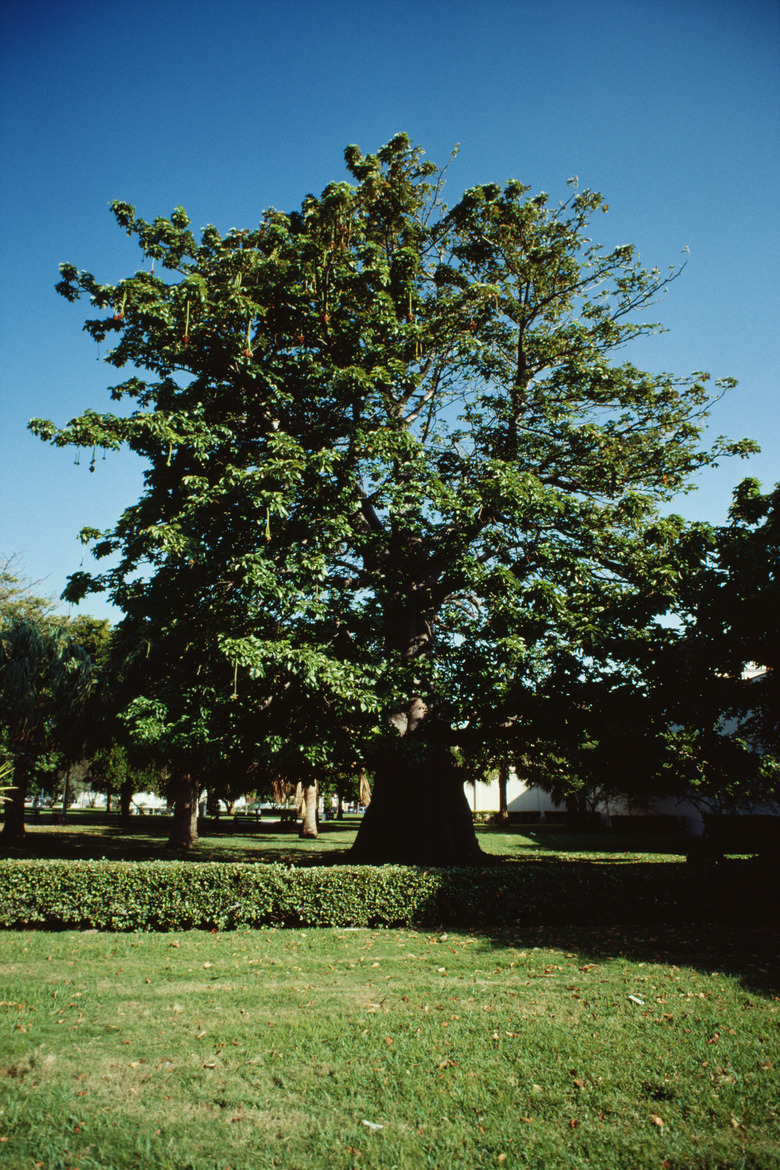Podocarpus Fern Pine Versus Macrophyllus
The Podocarpus genus is a collection of several species of non-native evergreen trees. One of those species is Podocarpus gracilior, which has a common name of "fern pine" or "weeping podocarpus." Another species is Podocarpus macrophyllus with a common name of "yew pine" or "Chinese Podocarpus." Therefore, to compare Podocarpus fern pine to Macrophyllus, we are actually comparing Podocarpus gracilior with Podocarpus macrophyllus. Even though they have a lot in common, there are some differences you should know about.
Size and Shape
Podocarpus gracilior, if left unpruned, will reach 30 to 50 feet tall and 25 to 35 feet wide. It has a billowy oval shape and irregular crown. The tips of the branches have a slight weeping effect. The lower branches will tend to touch the ground and should be removed. Macrophyllus is about half as tall and wide as gracilior and it has a rounded shape with dense upright branching. The commonly found variety "Maki" (P. macrophyllus "Maki") has a columnar and dense habit.
- The Podocarpus genus is a collection of several species of non-native evergreen trees.
- The commonly found variety "Maki" (P. macrophyllus "Maki") has a columnar and dense habit.
Foliage
Gracilior has bright grey-green leaves about 2 to 4 inches long. Macrophyllus has slightly longer leaves that are usually dark green, although new growth will be lighter.
Usage
Both species can be and typically are pruned to a hedge; however, gracilior is best used as an upright shade tree with lower limbs removed completely. Because macrophyllus is smaller, it is a better choice for a hedge that will be sheared regularly. Note that both trees are adapted to areas with confined root space and grow well in urban conditions. They can also be grown as container trees and are often used as houseplants or trained as bonsai.
Zone
Podocarpus macrophyllus is hardy to U.S. Department of Agriculture Hardiness Zones 8 to 11. Gracilior is only hardy in Zone 10 and 11, making it suitable for only the very warmest parts of the southern states that do not experience winter frosts.
- Gracilior has bright grey-green leaves about 2 to 4 inches long.
- Both species can be and typically are pruned to a hedge; however, gracilior is best used as an upright shade tree with lower limbs removed completely.
Growth Rate
Gracilior is classified as moderate to fast growing and macrophyllus is considered slow.
Culture
Both trees do well in full sun or partial shade. In full shade, they will not be dense. They are adaptable to many soil types and are very drought tolerant, but they do not do well in wet soil.
Additional Notes
Taxonomists have moved gracilior from the Podocarpus genus to the Afrocarpus genus. Horticulturists may now refer to this plant as Afrocarpus gracilior or Afrocarpus elongatus as well as the original name Podocarpus gracilior. This is one case where the common name, fern pine, is more helpful than the botanical name.
- Gracilior is classified as moderate to fast growing and macrophyllus is considered slow.
- This is one case where the common name, fern pine, is more helpful than the botanical name.
References
- "Manual of Woody Landscape Plants"; Michael A. Dirr; 1998
- Urban Tree Key: Podocarpus gracilior
